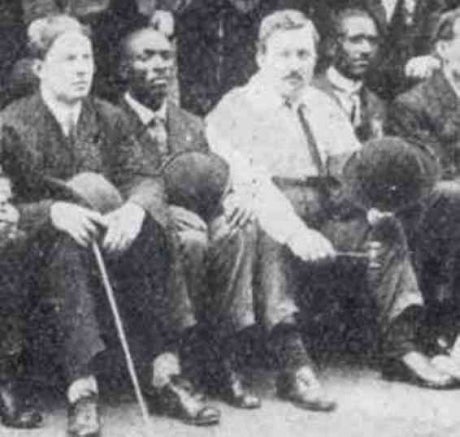Headline News
T.A. Stowers and the Early Teamsters Union

In August 2014, it will have been 112 years since a joint convention of the Team Drivers’ International Union and the Teamsters’ National Union was held in Niagara Falls, NY. At that convention in 1903, history was made for a number of reasons. That year these two unions united and the beginning of the Teamsters Union as we know it was initiated. Between August 3 and 13, numerous executive board members and delegates, including T.A. Stowers, a black Teamster delegate from Chicago’s Local 10 in the National Teamsters Union, discussed the future of the union and how it would be structured.
Stowers stood up to argue for the protection of black Teamsters from discrimination via language in the union’s constitution. He raised Resolution XXIX, which stated that “no member of the International Brotherhood of Team Drivers shall discriminate against a fellow worker on account of color or race.” He felt that job class combinations could be used as an alternative incentive for black and white Teamsters to work closer together as specific language was meeting resistance:
“I don’t think there ought to be anything in the Constitution that discriminates against the black man. If the question of color is not mentioned at all, but provision is made for two locals of the same class to come together, it will settle the matter,” Stowers said.
It is significant that there were integrated locals in the Teamsters Union. It is equally extraordinary that a person of color, such as Stowers, would be in a position of stature at that time. That same year, W.E.B DuBois released the classic, “The Souls of Black Folk,” depicting the biggest problem of the times, the color line. Also that year Jack Johnson became known as the “most famous and notorious African-American on earth” after beating “Denver” Ed Martin over 20 rounds for the World Colored Heavyweight Championship. Most disturbing is the fact that, in that year, 85 black Americans were lynched and Jim Crow was an accepted practice across America.
During these unlikeliest of times, Stowers received pushback in the discussion, especially from delegates like Cornelius Shea and George Innis who were focused on preserving the autonomy of local unions and preserving the delicately worded Teamster Constitution in a way that would not cause rifts in the new organization. Delegates like W. J. N. Saunders recognized the value of black Teamsters but were skeptical that the south would accept such a concept:
“I agree with delegate Young in what he says about the color question, as the old saying is, ‘Color is only skin deep.’ However, in the Southern states it will be impossible to get two classes in the same locals. The moment you attempt to do that, you will find the white people throughout the South will prevent you from going any further with your organizer. I think it is best to try and form locals of the colored men in the South. You might get men of their own color to organize them.”
The realities of race relations in America presented challenges to locals in various regions of the country and Teamster leaders acknowledged this as something that must be overcome in order to beat back employer tactics of division.
While the 1903 convention did not produce specific language that protected blacks from discrimination, the Teamsters union remained one of the only labor organizations of the time that had a constitution which did not include discriminatory language excluding black members. This is partially due to the efforts of T.A. Stowers and other early Teamster leaders who saw the changing tide and understood the need for a united labor movement.